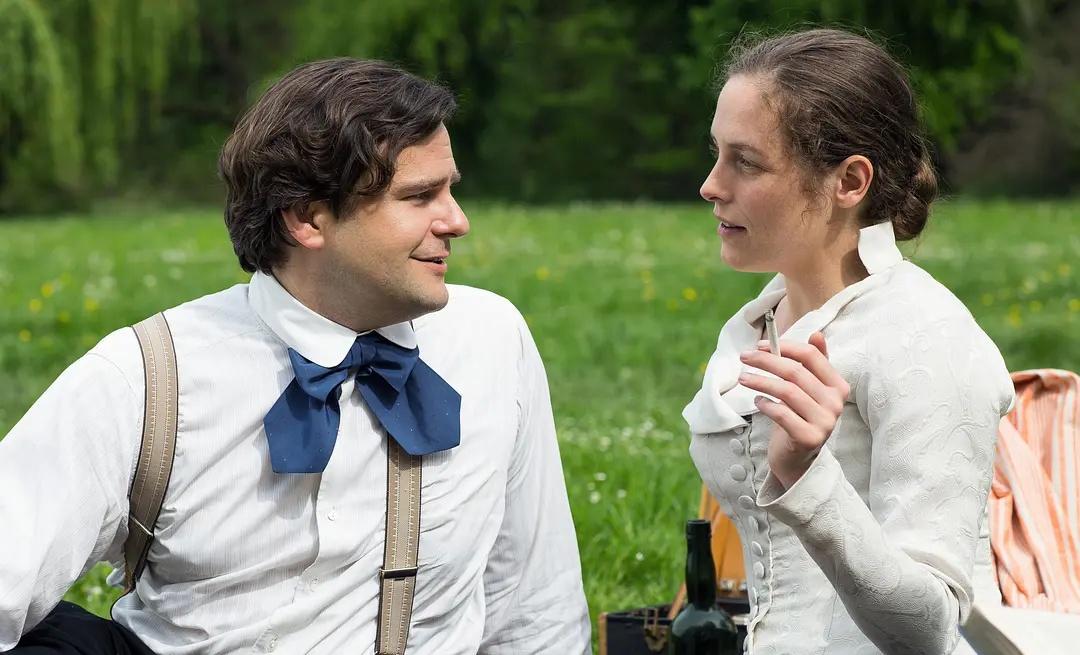
Stills from Salome's biographical film The Philosopher in Love
The world knows that Nietzsche was a great philosopher and Rilke was a great poet, but what they don't know is that they both liked the same woman, proposed to her, and then refused. We can't help but ask, what kind of strange woman makes them so fascinated?
Born in 1861 to a high-society family in Russia, Lu Salome was able to spend a happy childhood with her father, a general, free to read and play like her three older brothers.
When Salome was seventeen, she met her intellectual guide, the priest Kilot. Gilot was erudite and avant-garde in his thinking, giving Salome the outstanding insights of Kant, Rousseau, Voltaire, Schopenhauer, Spinoza and other thinkers, and such philosophical speculation deeply influenced Salome and shook some of her past unreflected beliefs and beliefs. Gradually, Salome felt a love for Kilot as if she had once loved her father, a noble and holy feeling. However, the relationship was soon destroyed, and Kilot proposed to Salome, offering to abandon her family, much to Salome's trepidation and uneasiness. She is acutely aware that she is pursuing spiritual independence and freedom, and that this love points to something symbolic with religious significance that cannot be put into practice by any real man. From this, she also germinated the idea of unmarriedism.
Stills from Salome's autobiographical film The Philosopher in Love
In 1880, Salome successfully applied to study at the University of Zurich in Switzerland, the only university in Europe at that time to accept women, majoring in religion, philosophy and linguistics. After a period of hard college life, she had to choose to take a break from school and go to Rome to recuperate due to tuberculosis. After arriving in Rome, Salome met the celebrity Madame Marvida, and it was in Madame Malvida's parlor that Salome came into contact with a large number of outstanding philosophers, thinkers and artists of the time. In particular, he had a good time with one of the young philosophers, Paul Ray, and became a confidant. Then, soon after, Paul Ray confessed to himself in front of his mother and proposed marriage, salome refused, she could not stand the mediocre married life, and only hoped to continue to maintain a close friendship with Paul Ray.
Later, the philosopher Friedrich Nietzsche was introduced to Salome. When Nietzsche first saw Salome, she was attracted by her distinctive temperament, and Salome was also impressed by Nietzsche's talent, and they talked happily about morality, religion, literature, art, marriage, and gender. Finally Nietzsche could not contain the excitement in his heart, and also expressed his love to Salome, and the impulse to marry, Salome once again expressed the idea of not marrying, her heart is very contradictory, on the one hand, she is eager to communicate with men in a deep spiritual way, on the other hand, she is opposed to the structured unequal pattern of male-female relationship. The conceited Nietzsche was emotionally frustrated, which was one of the emotional triggers for his later misogynistic tendencies and migraine neurosis.
But by 1886, there was another dramatic episode. Salome meets and loves Andreas, a handsome and talented professor of linguistics 15 years older than herself, and has a crush on each other, and this time, in Andreas's almost frantic pursuit, salome agrees to marry him. But it is proposed that there can only be a name for marriage, and without marriage, both have the freedom to associate with others. This form of marriage has brought Salome a relatively stable and comfortable creative environment, and her career has also achieved little success, publishing 8 books and more than 50 articles in 10 years.
In 1897, Salome fell in love with the young poet Rilke. At this time, Rilke was sensitive and fragile, with feminine qualities, he was deeply fascinated by Salome's mature and confident temperament, and expressed his admiration for Salome with his delicate brushstrokes, writing affectionately in "To Salome":
Cover my eyes and I can still see you. Cover my ears and I can still hear you. Without my feet, I can still walk towards you. Without my mouth, I can still call you.
Salome was touched by Rilke's childlike tenderness and accepted Rilke with her broad heart. They lived together in the countryside and traveled together to Russia. In the end, Salome felt compelled to let Rilke grow on her own, so she opted out, ending the three-year relationship.
In 1911, Salome ushered in the last inflection point of her life, that is, to switch to Freud to study psychoanalytic theory. At that time, psychoanalysis began to be popular in some small circles in Europe, salome first came into contact with this theory, showed great excitement, wanted to understand himself more deeply through this theory, and later found Freud, the leader of psychoanalysis at that time, followed him to study and study psychoanalytic theory, and maintained a relationship with Freud. She eventually grew up to become a first generation of psychoanalysts, making significant contributions especially to gender theory and positive narcissism theory.
Throughout Salome's saga, she is the face of avant-garde feminism, or more accurately, an uninhibited soul that transcends the gender consciousness of men and women.